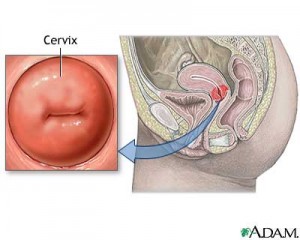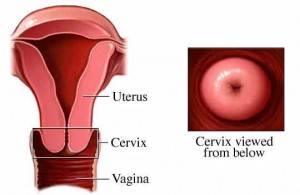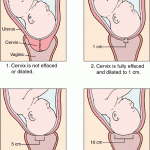


I have been a labor support doula predominantly in the New York, tri-state area since 1987. I have been flown internationally to attend births in Mexico, Germany, to name a few. Â Body work has been in my blood and life since I was 3 years old. Â My father remembers how I would run and jump into his arms at the end of a long day and hug, kiss and rub my little hands all over his neck and face and chest. He said it was one of the best parts of his days.
Now, many years later, I have discovered, beyond my own aromas, in labor and birth there are numerous scents to help enhance, soothe, uplift and support the mother, baby and her partner.  You may use aromatherapy by mixing with tracer oils or in a diffuser accompanied by low lights and music to enhance the aroma.  My favorites essences during labor, IF the woman is comfortable with the smell are moroccan rose and/or geranium together or separate, lavender and/or neroli, together or separate.  Clary sage is my all time favorite for stimulating the womb and encouraging the expansion and softening of the cervix.
Here is my research so far. Â Enjoy the aromatic experience! 🙂
AROMATHERAPY LABOR & BIRTH
BASIL
General tonic, can relieve nervous tension, flatulence and nausea and aids digestion. Credited with the power of relieving the pain of a woman in labor.
BERGAMOT
A “ray of sunshine.” This is said to uplifting, light and refreshing, helping relieve depression and anxiety. Helps to renew energy during the labor.
CHAMOMILE
The “Matriarch” of oils, very gentle, soothing and calming to the mind and body. Helps calm the irritated, fretful or nervous person. Helps to renew energy and ease during the labor.
CITRUS
Generally quoted as having some degree of photo toxicity, which is of relevance in maternity care, for these are otherwise considered to be among the safest oil to use during pregnancy.
CLARY SAGE
This essential oil must not be confused with sage. Don’t use sage for the baby’s sake – it leaves too high toxic residues in the body. Clary sage is a milder version, although still should be used with care. Helps respiratory, muscular, and uterine systems. Mild analgesic. Facilitates birth; uterine tonic. Euphoric. Helps breathing by calming the lower part of the spinal cord. Works on the uterus or that influence hormone balance, during the labor to stimulate contraction or after the birth of the baby to aid the mother’s recovery. This works well as a muscle relaxant, relieving stress and tension in the body. During the labor, it has a very special action of toning the muscles of the uterus and is particularly effective if the mother’s contraction is weak and irregular and progress towards the birth of the baby is slow. In this case, apply a little oil to the belly between contractions using the circular clockwise strokes, applying a firm but gentle pressure using the flat of the hands in the comfortable position. Concentrate on relaxing the muscles of the lower belly allowing the baby to move downward to press firmly on the neck of the uterus. Apply this massage for 10-15 min or until regular contractions is established. NOTE: Some practitioners advise that this be used during labor only. Before using this during pregnancy contact someone knowledgeable in essential oils.
GERANIUM
Circulation-stimulating. One of the best circulatory oils – and if the circulation is good, breathing will be easier. Good for uterus and endometrium. Contractive effect – pulls together dilated tissues, so excellent for after the birth. Good for the whole female reproductive system. Antidepressant, known for its uplifting effects. Has a great benefit as it is used to massage the lower back.
JASMINE
Works on the uterus or that influence hormone balance, during the labor to stimulate contraction or after the birth of the baby to aid the mother’s recovery. Reassure and boost confidence during the labor. Because of its actions on the uterus, it is invaluable during childbirth. It can strengthen contractions, yet relieve pain and due to its anti-depressant quality, can help with post-natal depression. Has a great benefit for massaging the lower back with Jasmine.
LAVENDER
Circulation stimulating. Slight analgesic effect. Calming. Antiseptic; antibiotic; disinfectant; slight antiviral properties; anti-inflammatory.Promotes healing of open wounds – can be used instead of antiseptics.Accepted by everyone. Good for headaches, fainting, and bringing around after shock. Restores unbalanced states to a more harmonious state, and has been said to strengthen contractions. Has a great benefit as it is used to massage the lower back.
LEMON OIL
Active phototoxic ingredients of lemon oil is mainly the furancoumarins bergapten and to some extent oxypeucedanin. However, some suggest that distilled lemon and lime oils, and expressed mandarin, tangerine and sweet orange oils are not phototoxic.
LEMONGRASS
The effectiveness in stimulating stress related weakness has been shown to help in encouraging milk production and digestion.
NEROLI
Works on the nervous system and facilitates easy breathing, especially during panting (if this is used to stop pushing). Its calming effect increases the oxygen supply to the blood and brain and helps the woman to avoid hyperventilation.In low doses (1-2 drops per day on a diffuser) it has a sedative and calming effect; in higher doses, it is a stimulant. Has a great benefit as it is used to massage the lower back.
NUTMEG
Analgesic. Calms the central nervous system; alleviates anxiety. Increases circulation – good for blood supply.
NEROLI
This oil may be one of the most effective anti-depressant oils; it is useful for insomnia, hysteria, anxiety and other stress-related condition.
ROSE
Uterine relaxant. Helps ligaments to soften, enabling the pelvic bones to expand; and to regain elasticity after the birth. Natural antiseptic. Slight analgesic effect. Good cardiac tonic. Reassure and boost confidence during the labor. Works on the uterus or that influence hormone balance, during the labor to stimulate contraction or after the birth of the baby to aid the mother’s recovery. Has a great benefit as it is used to massage the lower back
ROSEMARY
May be used in late pregnancy with caution, but are thought to be toxic in early pregnancy. Do NOT use if the mother develop high blood pressure during the pregnancy or labor as it may unduly stimulate the circulation if high blood pressure develops.








 “it’s not rocket science” Â
“it’s not rocket science”  


